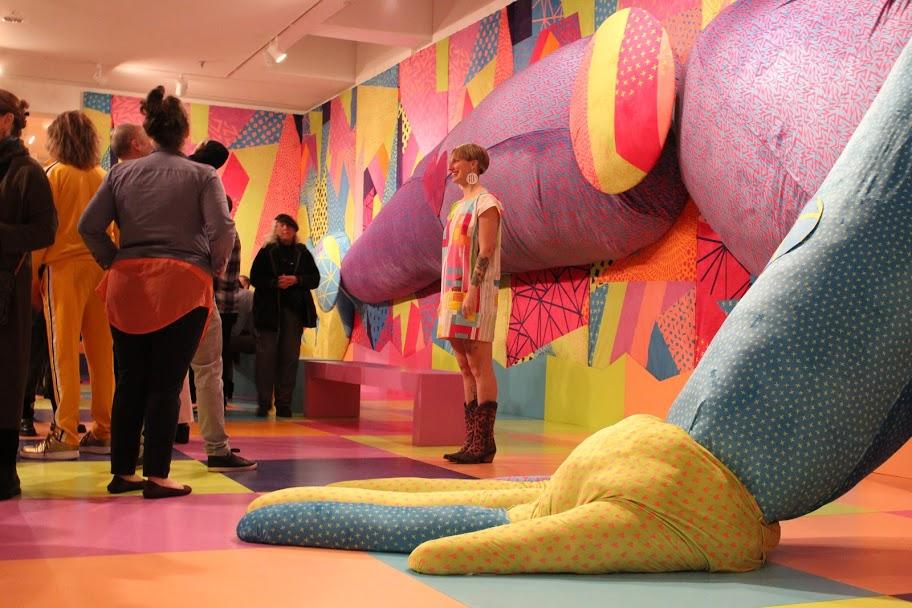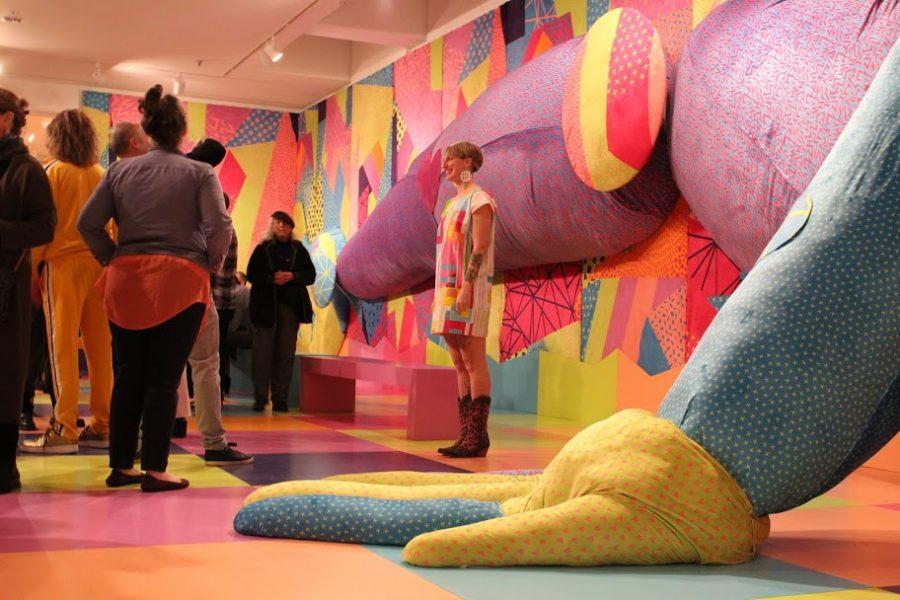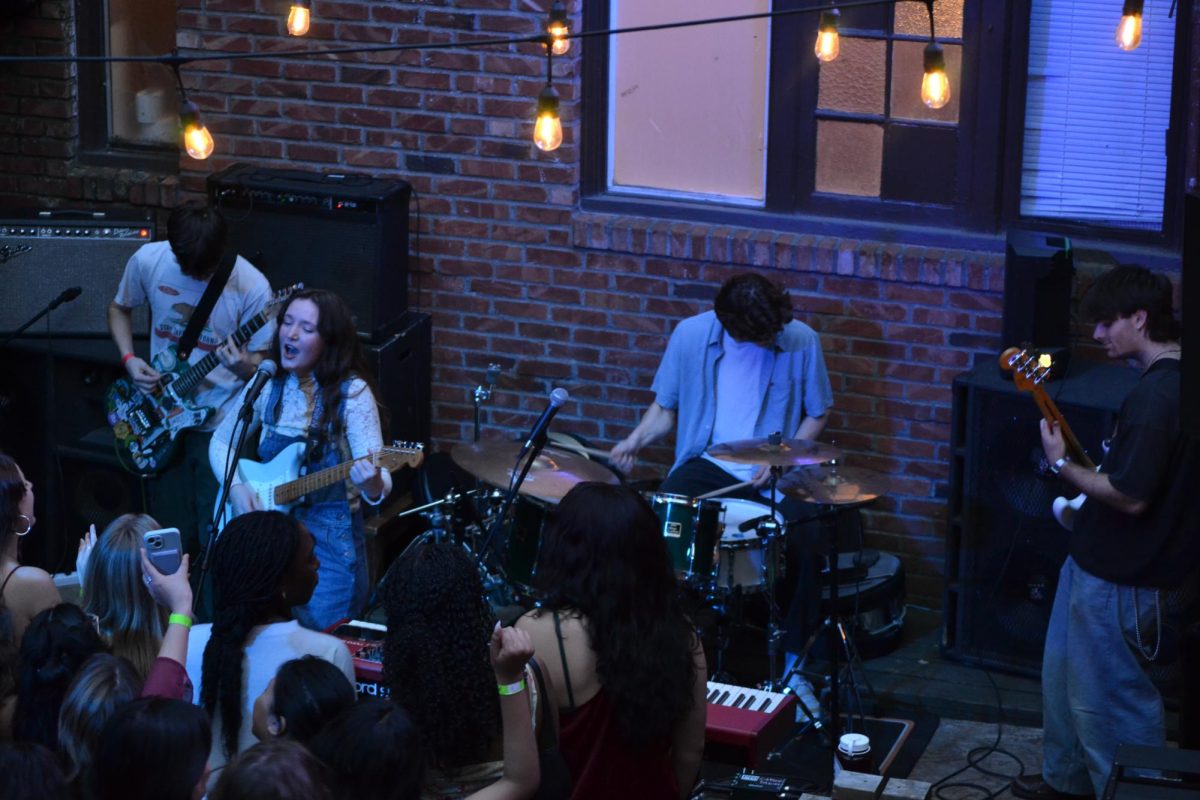
Provocative installations make their Seattle debut
In three rectangle rooms, each one more vivid and provocative than the last, a handful of artists from as far as Dubai and as near as Seattle made their impact on the art world. Altogether, the projects have many different voices and agendas, but though they do not look the same, the spaces overlap in the ideas that they convey.
On Jan. 26, Taschabalala Self, The Rain Doesn’t Know Friends From Foes and Cherdonna Shinatra each made their official debut at The Frye, attracting many diverse, curious bystanders attempting to understand the depth of their work.
The Frye is a popular local attraction, and in the past has hosted many pieces that inspire contemplation. Its new exhibits are no exception.
Jody Kuehner, the artist behind the Cherdonna Shinatra persona, talked in an interview for The Frye about why art with a message matters.
“It feels more extreme now, my responsibility to do more,” she said.
She then discussed how, as an artist, she has often questioned whether creating art is the right thing to do, rather than becoming a social worker or a lawyer.
“But then, here I am,” she said.
Much of the art in the new exhibits portrays the idea of activism through art.
The first installation is from Tschabalala Self, a New York and Connecticut based artist whose self-titled showcase features suggestions of race, gender, sexuality and how all those identities intersect. She explores ideas of defiance in self-indulgence, focusing on the untold stories of female black culture and subtly dismantling the societal implications of how black women behave or feel during sexual encounters.
The works, which range from stop animation to sculpture, are made up of fabrics, paints, media and other mediums, making for abstract, layered depictions of the depth and desire of nameless figures, which Self calls “avatars.”
Some of Self’s inspiration comes from dance. In her exhibit at The Frye, she works mainly with female figures, often suggesting prowess or lust. Her work comments on the societal implications of the sexuality and bodies of black women. It tells the stories of women who live by their own erotic guidelines. The work emphasizes the personal experience of desire and the ways that colored women see their bodies.
Although each space has its own detailed entrance where museum-goers can stop to read more information about the exhibits, alternative entrances provide a smooth walkthrough of all the art.
After Self’s exhibit in the walkthrough is “The Rain Does Not Know Friends From Foes,” a project by Ramin Haerizadeh, Rokni Haerizadeh and Hesam Rahmanian, three Iranian men who utilize contemporary news broadcasts to transform news clips into paintings.
They take hundreds of images from various broadcasting services, including PBS news sources, print out each frame, then paint over parts of each picture.
By transforming familiar figures into unrecognizable and sometimes even whimsical ones, the artists employ “astonishment, rather than empathy,” according to one of the artists in an interview done for The Frye.
This method forces the viewer to be a bystander amongst the action on screen because they do not have a personal connection with the events after the alterations.
The team’s recreation of broadcasts reflects the political turmoil about global immigration, terrorism and other events currently impacting the world.
The third and final exhibit on the walkthrough journey would be Cherdonna Shinatra, a space clothed in bright stretches of fabric and multicolored floor tiles. The artist, Kuehner, designed the space to be an immersive experience commenting on sexual and gender norms in today’s society. Her alter-ego, Cherdonna, who is not only a dancer but the leader of her own dance company called DONNA, is set to make 80 appearances throughout the exhibition’s lifetime at The Frye, where she will perform self-composed choreography with six other dancers.
In the pamphlet for the exhibit, Kuehner said that each performance will be different in content.
“Not wildly different,” Kuehner said, “but there will be moments of openness and room for improvisation within the work so that we can engage with the audience.”
Both Tschabalala Self and Cherdonna Shinatra employ the cultures of drag, dance and gender norms while utilizing the medium of patterned fabric. However, the two spaces are absolutely stark in contrast.
Kuehner creates a space where Cherdonna Shinatra, dressed in clownish clothes and adorned in ways suggestive of drag culture, will match the scenery when she makes appearances to perform.
Self’s multicolored work seems neutral-toned in comparison, draped in fabrics that appear to be strips of clothes or bed sheets that may have once been used. The two spaces compliment each other by showing two different ways in which fabric and feminine symbolism can be interpreted.
Every exhibit in some way comments on political or social norms, challenging them in different ways — but despite sharing walls, each space commits to completely different atmospheres. Artists all compose their narratives very differently, transforming the museum into a journey of exploring similar ideas in dissimilar contexts.
Walking through, voices from many different places on earth can be heard, should one choose to observe them.

















































































